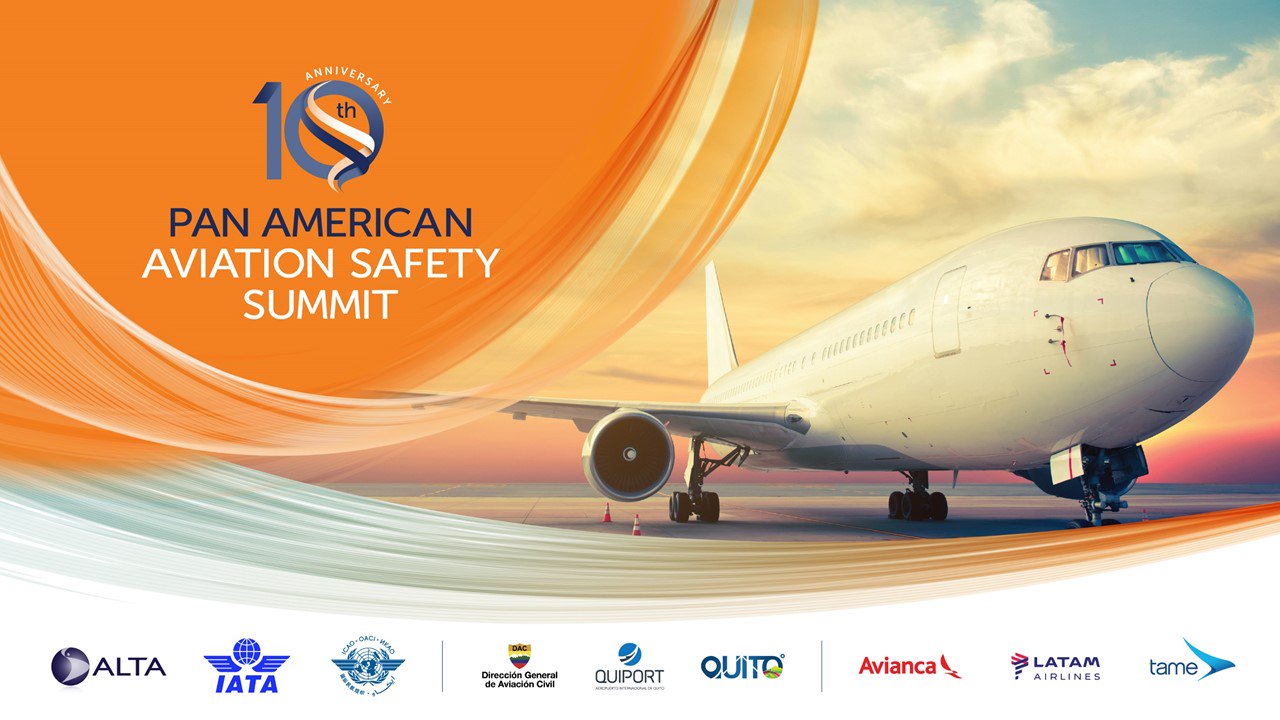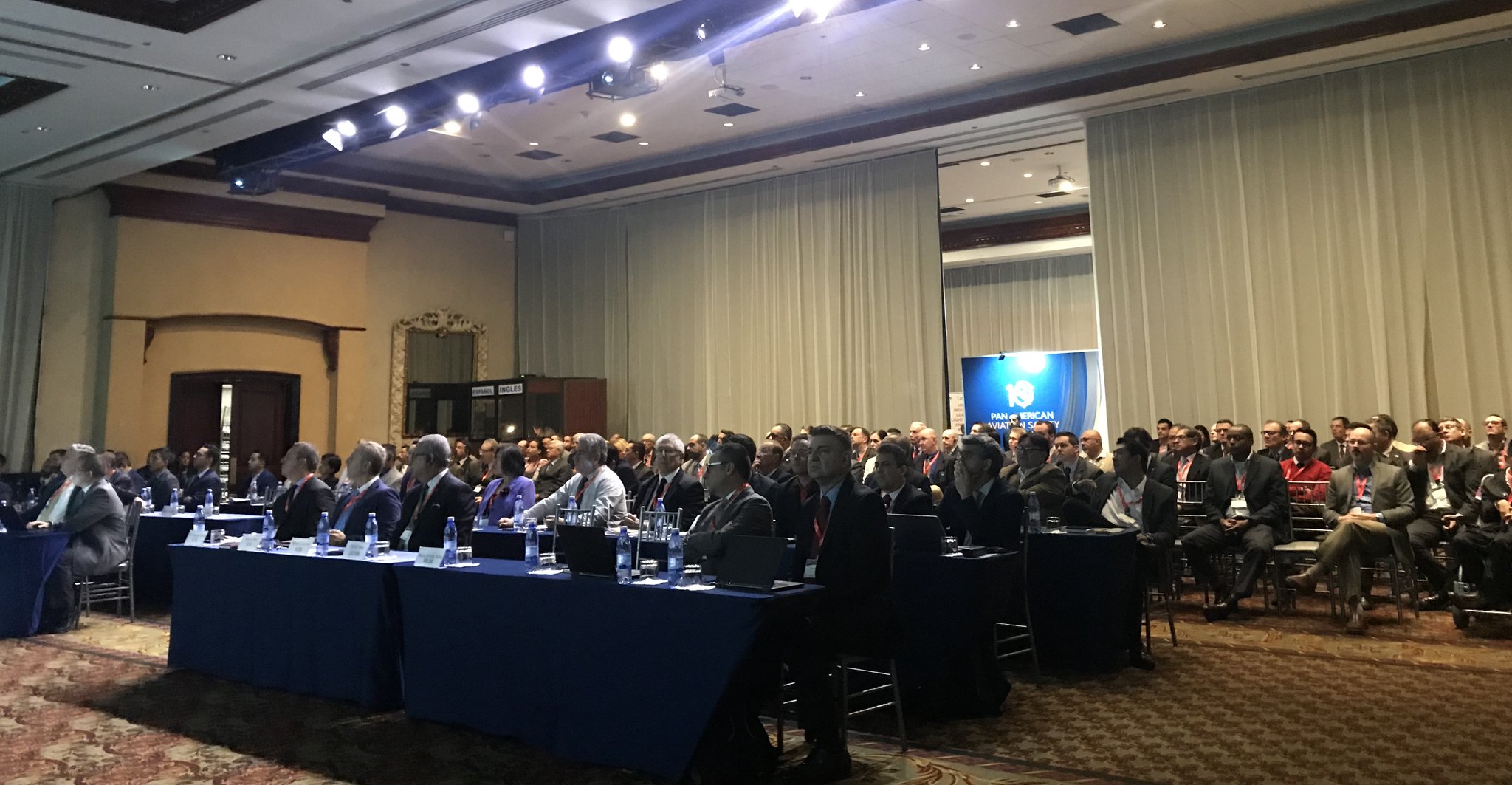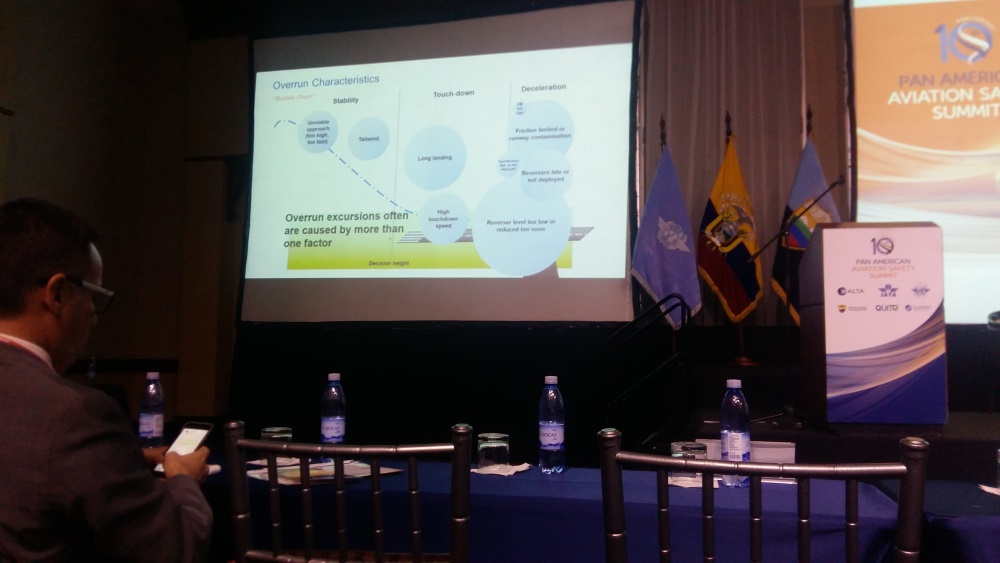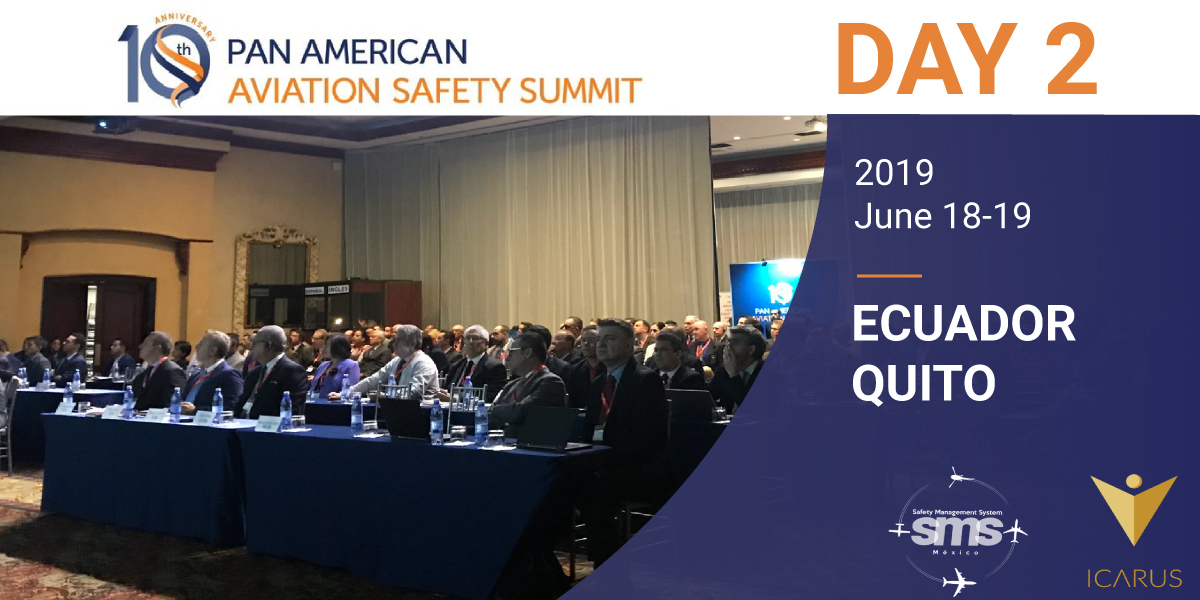QUITO, ECUADOR – 19 June 2019. The second and final day of the Pan America Aviation Safety Summit have brought to light intriguing real safety events from the manufacturers point of view as well as from airline companies.
Bright and sunny morning in Quito started on a strong note with airlines presenting their use cases of safety events and the manner they handled their situations. The conference room in JW Marriott Hotel was almost to full capacity and the first one to present was captain John DeLeeuw and Vickie Toman from American Airlines.

Here are the details of today’s presentations:
Safety Events – Airlines Session Part 2
1. American Airlines: “TCAS -RA at Denver Airport”
The first presentation of the day was very intriguing and mr. DeLeew and miss Toman presented it like a detective story. Denver airport is the 5th busiest airport in the USA (17th busiest in the world) and due to it’s parallel runways it is considered one of the most efficient. However, American Airlines noticed a high rate of traffic collision avoidance system (TCAS-RA) events at this airport. It occurs as Denver airport is on high altitude and the terrain is uneven. Therefore TCAS sensitivity levels were not switching during approach thus triggering alarms to pilots making this 3 times as likely to have an unstable approach (which is a hazard). Then American Airline did their homework and found out that even other airlines have had high rates of TCAS RA at Denver airport and that 44% of go-around events came because of TCAS RA. American Airlines performed their safety risk assessment and changed the procedure for approach, however it is still ongoing collaboration with Denver airport how to mitigate this problem completely. It was an example of a good SMS program with pilots voluntary reporting incidents and encouraged to perform go-around in case of a unstable approach.
2. Avianca: “CFIT Cali”
The next one on the list was Spanish speaking mr. Jorge Robles from Avianca. He showcased an example of a flight from Bogota to Cali, a domestic flight in Colombia. At 40.5 miles from Cali airport (CLO airport code) a GPWS (Ground Proximity Warning System) activated. Flight crew followed the standardized procedure and successfully landed the aircraft minutes later. How they managed to get the plane close to the ground during approach? Route cause for this safety event was failure to prioritize tasks adequately and endangering the flight during approach, lack of cross-cockpit communication due to the selection of the altitude window in descend mode (procedure not followed correctly) and provided inadequate procedural guidance.
3. GOL: “Boeing 787 depressurization”
Brasilian airline GOL and it’s Dan Guzzo demonstrated the flight GOL 2179 that had cabin pressure incident at the cruise altitude (FT380). Flight crew members followed the procedure to reset the system responsible for this issue, however it wasn’t responding to their inputs. They then decided to perform emergency descent and soon afterwards landed safely. The internal investigation was opened and found that one of the valves had ruptured named Precooler control valve (PCCV). The precooler control valve, controlled by a downstream temperature sensor, regulates manifold air temperature by controlling the amount of fan air flow through the precooler inside the engine. However, PCCV had low reliability history published by Boeing. GOL Airlines then switched from -5 version to -6 version of the valve only to find even high rates of low reliability. They then performed another switch to -7 version in hope to tackle this safety issue. Incredibly, even the newest version had higher rates than -5 and -6 version. The airline opted to switch back to -5 version that had the least rate of those three versions. In order to combat the problem, GOL Airlines did little assessment:
Threats that recongized:
- low reliability of PCCV
- extended time between the Pneumatic survey (15 days)
- low adherence from pilots
- cost of 97000 $ by 1 occurence
Safety enhancements after investigations:
- Pneumatic Duct survey to be performed every 4 days
- new maintenance procedure
- creation of standardized procedure instructing pilots for this situation
- new component created by the manufacturer
Interesting key messages
- new components not necessarily better than the old ones
- a well trained crew is very effective recovery defense
4. MAP: “Risk assessment in flight operations. Brazilian Amazon Case”
Brasilian presenter mr. Tomás Abrego showcased the general information about it’s airline named MAP Linhas Aéreas that contain the fleet of 6 ATR aircraft. His biggest challanges are the geographical position of his operations. Being in Amazonas, connecting Manaus to São Gabriel da Cachoeira is one of the most challenging routes due to weather, terrain and training for these situations. Mr. Abrego showed impressive effort to assess the risk of his operation to continue safely operating in these routes.

Safety events – Manufacturers Session
Next in the queue were manufacturers with their safety stories to share to the audience. I have to admit, maybe even more intriguing stories.
AIRBUS: “Black Swan events”
First, slower presentation, was from Airbus representative mr. David Zwegers that spoke fluent Spanish. He demonstrated “Black Swan events” that are unforeseen events with massive consequences. One of the events presented as Black Swan events were 2003 Baghdad DHL missile attack, US Airways Flight 1549 knows as Hudson miracle, The Capital Airlines Airbus A320 windshear accident etc.). Mr. Zwegers pointed out that it is hard to train for these events, however they remain part of the industry. The key message was to be ready to think outside the box, taking the best out of your procedures and trainings.
ATR: “Facts and fixes”
French representative of ATR, mr. Geraud de Rivals-Mazeres presented few examples of their safety issues and their fixes, however the most interesting one was about smoke in the cockpit. On one of the flights involving ATR aircraft 1 minute after the take off, engine number 1 failed and smoke entered the cabin. One of the cabin crew put on her smoke hood and the other couldn’t due to the weight of the smoke hood (19kg) and also struggle to open the bag with the hood. The fix that ATR set out was the modification of the PBE bag with lower weight and training enhancements where cabin and flight crew actually need to open the bag in training and talk in oxygen masks.
BOEING: “Anatomy of Runway Excursions and lessons learned”
Mr. Sam Goodwill demonstrated the runway excursion characteristics or overrun characteristics that are often caused by more than one factor. One of the defining factors is unstable approach (too high or too fast). It was demonstrated on one of the examples of B737 aircraft in La Guardia airport in New York. At the airport it was raining and the inbound aircraft was flying an unstable approach and the landing was long (the captain can be heard saying DOWN! DOWN! with already 3000 feet wasted). When touching down there was a delay in flight crew performing deceleration. The delay was 4.5 seconds after touchdown which meant additional 1250 feet lost. The aircraft overrun the runway as there was not enough feet of the runway before the eventual stop. Corrective actions for this event was training for go-around and flying a stable approach. The video “No landing is routine” can be found HERE.

EMBRAER: “Abnormal runway contact during takeoff under heavy rain at Durango airport, Mexico”
Paulo Razaboni showed to the audience the accident at Durango airport which luckily did not have any fatalities. Final report showed that there was no aircraft malfunction, but powerful windshear and the crew didn’t recognize the windshear conditions. To make things worse, the captain assigned a non-qualified crew member to act as a copilot while the first officer was seating in a jumpseat behind them. The ATC took their share of blame as they didn’t provide warnings about significant weather changes.
Rapid weather change at Durango on Jul 31 2018
The aircraft taxied away towards the runway while the weather conditions were relatively good, however summer thunderstorm quickly changed the landscape and provided heavy rain in a space of 15 minutes just in time when Embraer aircraft was about to take off. During taking off, it hit the windshear which slummed the plane on the runway, breaking off the engines and hitting the trees before finally coming to a stop. Remarkably without injuries. The main cause was the loss of speed at the final phase of take off by low altitude windshear that is called microbursts.
In order to tackle this issue, the flight crew must be aware of those conditions and perform windshear escape maneuver. Also it is advisable to wait for few minutes or reject takeoff or do go-around if you are landing.
The conference ended with Ecuadorian safety team discussing their progress in safety and with the hosts announcing that the next event will be held in Sao Paulo, Brazil on 8-10 June 2020.







